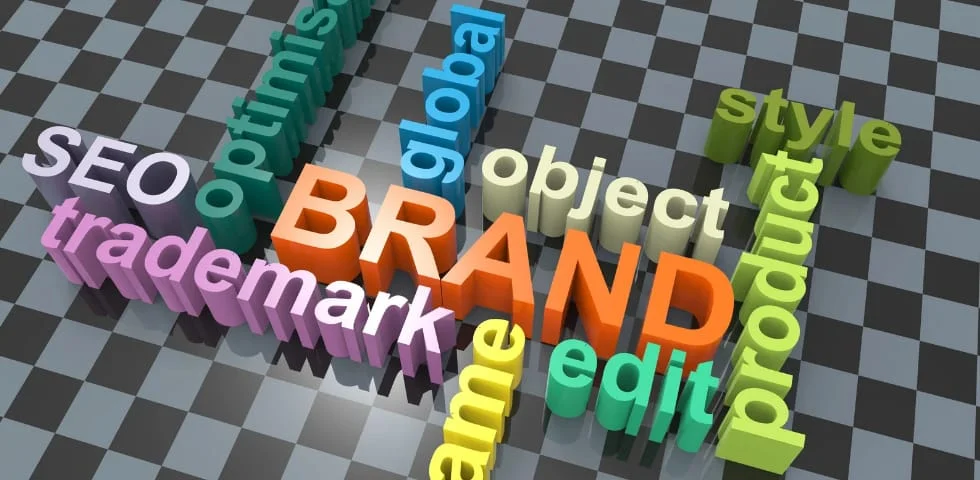Introduction
In today’s fast-paced digital landscape, efficiency is the name of the game. Businesses are constantly looking for ways to streamline operations, reduce manual labor, and maximize their marketing efforts. One of the most powerful tools in this pursuit is marketing automation—a strategy that leverages software to handle repetitive tasks, manage complex workflows, and optimize customer interactions.
Consider this: companies that use marketing automation see a 14.5% increase in sales productivity and a 12.2% reduction in marketing overhead. These impressive numbers are not just flukes; they are the result of strategically implementing automation to handle the heavy lifting of marketing tasks.
In this blog post, we’ll delve into the transformative power of marketing automation. We’ll explore what it is, why it’s essential for modern businesses, and how you can harness it to streamline your marketing tasks and workflows. Whether you’re a small business owner trying to scale or a seasoned marketing professional looking to boost efficiency, this guide will provide actionable insights to help you optimize your business with marketing automation.
What is Marketing Automation?
Marketing automation is more than just a buzzword—it’s a strategic approach that can significantly enhance how businesses interact with their audience. At its core, marketing automation involves using software platforms to perform repetitive marketing tasks and processes automatically. These tasks can range from sending out emails and social media posts to managing customer data and analyzing marketing performance.
The essence of marketing automation is efficiency. By automating tasks that were once done manually, businesses can save time, reduce errors, and focus on more strategic activities, like crafting creative campaigns or developing new products. For example, instead of manually sending out hundreds of emails, an automated system can segment your audience, personalize each message, and send them out at the optimal time—all without requiring constant oversight.
But marketing automation is not just about doing things faster. It’s also about doing things smarter. With the ability to collect and analyze vast amounts of data, these tools allow businesses to understand their customers better, tailor their marketing efforts more precisely, and ultimately drive higher engagement and conversion rates.
In the following sections, we’ll explore the specific benefits of marketing automation, the types of software available, and how you can implement these tools to transform your marketing workflows.
Key Benefits of Marketing Automation
Marketing automation offers a multitude of benefits that can elevate your business’s marketing efforts from good to exceptional. Below are some of the most significant advantages:

1. Increased Efficiency
One of the primary benefits of marketing automation is the dramatic boost in efficiency. Automation software handles repetitive tasks like sending emails, scheduling social media posts, and managing customer data—freeing up valuable time for your team to focus on higher-level strategy and creativity. This streamlined process not only saves time but also reduces the likelihood of human error, ensuring that your campaigns run smoothly and consistently.
2. Enhanced Customer Targeting
Automation allows for precise audience segmentation and personalized messaging at scale. By analyzing customer behavior and preferences, marketing automation tools can automatically segment your audience and tailor messages to individual needs and interests. For example, if a customer frequently visits your website but hasn’t made a purchase, automation software can trigger a personalized email offering a special discount, nudging them towards conversion.
3. Improved ROI
Every marketer’s goal is to maximize return on investment (ROI), and marketing automation is a powerful tool in achieving this. By automating processes, you reduce operational costs and increase the effectiveness of your marketing efforts. Targeted campaigns, personalized communication, and timely follow-ups—enabled by automation—lead to higher conversion rates and, ultimately, a better ROI.
4. Consistent Communication
Consistency is key in building and maintaining customer relationships. Marketing automation ensures that your brand stays top-of-mind with customers by delivering consistent, timely communication across multiple channels. Whether it’s a welcome email to a new subscriber or a reminder about an abandoned cart, automation ensures that your messages reach the right people at the right time.
5. Data-Driven Insights
Marketing automation tools offer robust analytics capabilities, providing you with insights into how your campaigns are performing. These insights allow you to make informed decisions, optimize future campaigns, and continuously improve your marketing strategies. From open rates to conversion metrics, the data generated by automation tools is invaluable in refining your approach and driving better results.
As you can see, marketing automation isn’t just about making your life easier—it’s about making your marketing efforts more effective, personalized, and data-driven. Next, we’ll dive into the different types of marketing automation software available and how they can fit into your business strategy.
Types of Marketing Automation Software
Marketing automation tools come in various forms, each designed to address specific aspects of your marketing strategy. Understanding the different types of software available will help you choose the right tools to meet your business needs. Here’s a look at the most common types of marketing automation software:

1. Email Marketing Automation
Email marketing is one of the most widely automated marketing activities. Tools like Mailchimp, HubSpot, and ActiveCampaign allow businesses to automate email campaigns with features like list segmentation, personalized messaging, and A/B testing. These platforms can send out welcome emails, follow-up messages, and drip campaigns based on user behavior, ensuring that your communication is timely and relevant.
For instance, if a customer signs up for your newsletter, an email marketing automation tool can automatically send a welcome email, followed by a series of educational emails that introduce them to your products or services. This nurtures the lead without requiring ongoing manual effort.
2. Social Media Automation
Social media automation tools like Hootsuite, Buffer, and Sprout Social help businesses manage their social media presence more efficiently. These platforms allow you to schedule posts across multiple channels, monitor social media activity, and even automate responses to customer inquiries.
Automation in social media not only saves time but also ensures consistent posting schedules, which is critical for maintaining engagement with your audience. Some tools also provide analytics, helping you track the performance of your posts and refine your social media strategy accordingly.
3. Customer Relationship Management (CRM) Automation
CRM systems like Salesforce, Zoho CRM, and HubSpot CRM are essential for managing customer data and interactions. These platforms automate the process of tracking customer interactions, managing sales pipelines, and nurturing leads.
CRM automation helps businesses stay organized by automatically updating customer records, sending follow-up reminders to sales teams, and even automating communication with leads based on their behavior. This not only improves the efficiency of your sales process but also enhances the customer experience by ensuring timely and relevant communication.
4. Lead Nurturing and Scoring
Lead nurturing and scoring tools like Marketo and Pardot automate the process of guiding prospects through the sales funnel. These tools track user behavior—such as email opens, website visits, and content downloads—and assign scores to leads based on their engagement.
By automating lead nurturing, you can ensure that each prospect receives the right content at the right time, increasing the likelihood of conversion. Lead scoring, on the other hand, helps sales teams prioritize their efforts by focusing on leads that are most likely to convert, based on their behavior and engagement levels.
Marketing automation software is a powerful ally in executing a well-rounded and effective marketing strategy. By choosing the right tools for your business, you can automate time-consuming tasks, enhance customer interactions, and ultimately drive better results.
How to Implement Marketing Automation
Implementing marketing automation can be a game-changer for your business, but it requires careful planning and execution. Below is a step-by-step guide on how to effectively integrate marketing automation into your workflows.

1. Assessment and Planning
Before diving into automation, it’s essential to assess your current marketing activities. Identify the tasks that are repetitive, time-consuming, or prone to error—these are the areas where automation can have the most impact.
Next, set clear goals for what you want to achieve with marketing automation. Are you looking to increase lead generation, improve customer engagement, or streamline your sales process? Understanding your objectives will help you choose the right tools and strategies.
2. Choosing the Right Tools
Once you’ve identified the tasks you want to automate, it’s time to select the tools that best fit your needs. Consider the following when evaluating marketing automation software:
- Functionality: Does the tool offer the features you need, such as email automation, CRM integration, or lead scoring?
- Scalability: Can the tool grow with your business, handling more complex tasks as your needs evolve?
- Ease of Use: Is the software user-friendly, or will it require extensive training?
- Integration: Can the tool easily integrate with your existing systems, such as your CRM, content management system (CMS), or analytics platforms?
- Cost: Does the pricing align with your budget, considering both short-term and long-term needs?
For example, if your primary goal is to automate email marketing, a tool like Mailchimp might be ideal. However, if you need a more comprehensive solution that includes CRM, lead scoring, and analytics, a platform like HubSpot might be a better fit.
3. Integration
With the right tools in hand, the next step is integration. Begin by connecting your marketing automation platform to your existing systems, such as your website, CRM, and social media accounts. This will ensure that data flows seamlessly between platforms, allowing for more accurate tracking and reporting.
It’s also crucial to map out your workflows before implementing automation. Determine how different tasks and processes will be automated, and set up triggers that will initiate these automated actions. For instance, you might set up a trigger to send a welcome email when someone subscribes to your newsletter or to add a lead to a CRM when they download a whitepaper.
4. Monitoring and Optimization
Marketing automation is not a set-it-and-forget-it solution. Regular monitoring is essential to ensure that your automated processes are running smoothly and achieving the desired results.
Use the analytics tools built into your marketing automation platform to track key metrics such as open rates, click-through rates, lead conversion rates, and ROI. Analyzing this data will help you identify areas where the automation could be improved.
For instance, if you notice that a particular email sequence has low open rates, you might experiment with different subject lines or send times. Similarly, if a lead nurturing campaign isn’t generating conversions, you may need to adjust the content or timing of your automated messages.
Continual optimization is key to maximizing the benefits of marketing automation. By regularly reviewing and refining your automated workflows, you can ensure that your marketing efforts remain effective and aligned with your business goals.
Real-World Examples and Case Studies
To fully grasp the power of marketing automation, it’s helpful to look at real-world examples of businesses that have successfully implemented these tools. These case studies highlight the tangible benefits that marketing automation can bring to a company, from increased efficiency to significant revenue growth.

1. Example 1: Small Business Success with Email Automation
Company: A local boutique retail store
Challenge: The business struggled to maintain consistent communication with its growing customer base. The manual process of sending out promotional emails and newsletters was time-consuming and prone to errors.
Solution: The boutique implemented an email marketing automation tool, such as Mailchimp, to streamline its email campaigns. The store owner set up automated email sequences to welcome new subscribers, send personalized recommendations based on past purchases, and re-engage customers who hadn’t made a purchase in a while.
Results: Within six months, the boutique saw a 25% increase in email open rates and a 20% boost in sales attributed to their email campaigns. The automation allowed the store to maintain regular communication with customers, build stronger relationships, and drive more repeat business.
2. Example 2: B2B Lead Nurturing with CRM Automation
Company: A B2B SaaS company specializing in project management software
Challenge: The company faced difficulties in managing and nurturing a large volume of leads. The manual process of tracking lead interactions, scoring them, and sending follow-up emails was inefficient and led to lost opportunities.
Solution: The company adopted HubSpot CRM to automate its lead nurturing process. The platform automatically tracked lead behavior, assigned scores based on engagement, and triggered personalized follow-up emails when leads reached certain thresholds.
Results: The automation helped the company increase its lead conversion rate by 30% within the first year. The sales team could focus on high-priority leads, resulting in more closed deals and higher revenue. The CRM automation also provided valuable insights into the sales pipeline, allowing for more accurate forecasting and resource allocation.
3. Example 3: Large Enterprise Efficiency with Multi-Channel Automation
Company: A global e-commerce giant
Challenge: Managing marketing campaigns across multiple channels—email, social media, and web—became increasingly complex as the company scaled. Coordinating these efforts manually led to inconsistent messaging and missed opportunities.
Solution: The e-commerce company implemented an enterprise-level marketing automation platform like Marketo, which integrated with their existing CRM and e-commerce systems. The platform enabled them to automate multi-channel campaigns, ensuring consistent messaging and timing across all platforms.
Results: The company achieved a 40% increase in customer engagement across all channels. The automation allowed them to personalize their marketing at scale, resulting in a 15% increase in overall sales. Additionally, the marketing team saved hundreds of hours each month by eliminating manual campaign management tasks.
These examples demonstrate how marketing automation can transform businesses of all sizes, across various industries. Whether you’re a small retail store or a large enterprise, automation tools can help you streamline processes, improve customer engagement, and drive growth.
Common Challenges and Solutions in Marketing Automation
While marketing automation offers numerous benefits, it’s not without its challenges. Understanding these potential hurdles—and knowing how to overcome them—can help ensure a smoother implementation and more effective use of automation tools.

1. Initial Costs and Learning Curve
Challenge: The upfront cost of marketing automation software and the time required to learn the system can be daunting, especially for small businesses or those new to automation. Complex platforms may require significant training and onboarding, which can temporarily slow down your team’s productivity.
Solution: Start with a clear budget and choose a platform that aligns with both your financial capacity and your business needs. Some tools offer tiered pricing models, allowing you to start with basic features and upgrade as you grow. Additionally, many platforms provide comprehensive tutorials, webinars, and customer support to help your team get up to speed. Begin with automating a few key processes before expanding to more complex workflows. This phased approach allows your team to build confidence with the tool while delivering immediate value.
2. Data Management
Challenge: Marketing automation relies heavily on accurate and up-to-date data. However, managing large volumes of data—such as customer information, engagement metrics, and lead scoring—can be challenging. Inaccurate or outdated data can lead to ineffective campaigns and poor customer experiences.
Solution: Implement strong data management practices from the outset. Regularly audit your data to ensure its accuracy and completeness. Use tools that offer data cleansing features, which automatically update and correct data errors. It’s also important to establish clear guidelines for data entry and maintenance, ensuring consistency across your team. Integrating your automation platform with your CRM and other data sources can help keep your information synchronized and reliable.
3. Customer Engagement
Challenge: While automation can significantly improve efficiency, there’s a risk of over-automating and losing the personal touch that customers value. If not carefully managed, automated messages can come across as impersonal or irrelevant, leading to decreased engagement and potential customer attrition.
Solution: Balance automation with personalization. Use the data collected by your automation tools to tailor messages to individual customers. Segmentation is key—group your audience based on behavior, preferences, and demographics to deliver more relevant content. Additionally, mix automated communication with human interaction where appropriate, such as personalized follow-up calls or custom responses to customer inquiries. Regularly review and tweak your automated campaigns based on customer feedback and performance metrics to keep your content engaging and effective.
By proactively addressing these challenges, you can maximize the benefits of marketing automation while minimizing potential pitfalls. Proper planning, data management, and a focus on personalization will help you leverage automation to enhance—not hinder—your customer relationships.
Future Trends in Marketing Automation
As marketing automation continues to evolve, new trends are emerging that will shape the future of digital marketing. Understanding these trends will help you stay ahead of the curve and ensure that your automation strategies remain effective and relevant.

1. AI and Machine Learning Integration
Artificial intelligence (AI) and machine learning are set to revolutionize marketing automation. These technologies enable automation platforms to analyze vast amounts of data, identify patterns, and make predictions, all in real-time. This allows for even more precise targeting and personalization.
For example, AI can help predict customer behavior, such as the likelihood of a purchase or churn, and automatically adjust your marketing efforts accordingly. Machine learning algorithms can optimize email send times, content recommendations, and even ad placements based on past performance and customer engagement data. As AI continues to advance, we can expect even more sophisticated and intelligent automation tools that can handle complex marketing tasks with minimal human intervention.
2. Personalization at Scale
Personalization is no longer a luxury; it’s a necessity in digital marketing. However, delivering personalized experiences to a large audience has traditionally been challenging. Future trends in marketing automation are focused on achieving true personalization at scale.
Automation platforms are increasingly incorporating advanced segmentation and dynamic content features that allow businesses to deliver highly personalized messages to each customer, regardless of the size of the audience. For instance, a marketing automation tool might generate personalized product recommendations in real-time based on a customer’s browsing history, past purchases, and even current trends. As these tools become more sophisticated, they will enable businesses to create unique, personalized experiences for every customer, driving higher engagement and loyalty.
3. Omnichannel Automation
The future of marketing automation lies in omnichannel strategies—integrating all customer touchpoints into a seamless, cohesive experience. Consumers now interact with brands across multiple channels, including email, social media, websites, and mobile apps. Omnichannel automation ensures that these interactions are consistent and connected, regardless of the platform.
Future automation platforms will offer more robust integrations across all channels, enabling marketers to create unified campaigns that deliver a consistent message wherever the customer is. For example, a customer might receive a personalized email offer, see a related ad on social media, and receive a push notification on their mobile device—all coordinated through a single automation platform. This seamless approach not only improves the customer experience but also increases the effectiveness of marketing campaigns by reaching customers at multiple touchpoints.
As these trends continue to develop, businesses that embrace them will be better positioned to meet the changing expectations of consumers and capitalize on new opportunities in digital marketing. The key to success will be staying informed and adapting your marketing automation strategies to leverage these innovations.
Comparing Top Marketing Automation Tools
Choosing the right marketing automation tool is crucial for achieving your business goals. With so many options available, it can be challenging to decide which platform best suits your needs. In this section, we’ll compare some of the top marketing automation tools, highlighting their strengths, weaknesses, and ideal use cases.

1. HubSpot vs. Marketo
HubSpot and Marketo are two of the most popular marketing automation platforms, each catering to slightly different audiences.
HubSpot:
- Strengths: HubSpot is known for its user-friendly interface and all-in-one marketing, sales, and service software. It’s particularly well-suited for small to mid-sized businesses that need an easy-to-use platform with robust features such as CRM, email marketing, and social media management.
- Weaknesses: While HubSpot is excellent for beginners and growing businesses, it may lack some of the advanced customization and scalability options that larger enterprises require.
- Best For: Small to mid-sized businesses looking for a comprehensive and intuitive marketing automation solution.
Marketo:
- Strengths: Marketo excels in handling complex marketing operations with powerful analytics, robust lead management, and sophisticated personalization features. It’s a great choice for larger enterprises or businesses with complex needs that require deep customization and integration with other enterprise tools.
- Weaknesses: Marketo has a steeper learning curve and can be more expensive, making it less ideal for smaller businesses or those with limited technical resources.
- Best For: Large enterprises and businesses with complex marketing needs that require advanced customization and powerful analytics.
2. ActiveCampaign vs. Mailchimp
ActiveCampaign and Mailchimp are popular choices for businesses focusing on email marketing automation, but they offer different strengths.
ActiveCampaign:
- Strengths: ActiveCampaign is known for its powerful email automation features, including advanced segmentation, dynamic content, and built-in CRM capabilities. It’s ideal for businesses looking to automate complex email marketing workflows and integrate them with their sales processes.
- Weaknesses: The platform can be somewhat overwhelming for beginners due to its extensive features and customization options. Additionally, the pricing increases with the number of contacts, which can become costly for larger lists.
- Best For: Businesses of all sizes that need sophisticated email marketing automation with CRM integration.
Mailchimp:
- Strengths: Mailchimp is one of the most accessible email marketing platforms, known for its ease of use, affordability, and extensive templates. It’s ideal for small businesses, startups, or those new to email marketing automation who need a straightforward tool to get started.
- Weaknesses: While Mailchimp is excellent for basic email campaigns, it lacks the advanced automation features and CRM integration that more experienced marketers might need.
- Best For: Small businesses and startups that want a user-friendly, cost-effective solution for basic email marketing.
3. Pardot vs. Salesforce Marketing Cloud
For businesses focused on B2B marketing, Pardot and Salesforce Marketing Cloud are strong contenders, each offering robust automation features tailored to different needs.
Pardot:
- Strengths: Pardot is designed specifically for B2B marketing, offering features like lead scoring, ROI reporting, and deep integration with Salesforce CRM. It’s particularly effective for nurturing leads through long sales cycles and providing detailed analytics to support sales teams.
- Weaknesses: Pardot can be expensive and requires a solid understanding of Salesforce’s ecosystem, which can be a barrier for companies not already using Salesforce CRM.
- Best For: B2B companies using Salesforce CRM that need a powerful tool for lead nurturing and detailed reporting.
Salesforce Marketing Cloud:
- Strengths: Salesforce Marketing Cloud offers extensive automation capabilities across multiple channels, including email, SMS, social media, and web. It’s perfect for enterprises that need a comprehensive, omnichannel marketing solution with deep customer insights.
- Weaknesses: Like Pardot, Salesforce Marketing Cloud comes with a higher price tag and a complex setup process, making it more suitable for larger enterprises with dedicated technical resources.
- Best For: Large enterprises needing a sophisticated, omnichannel marketing platform with deep integration into the Salesforce ecosystem.
Choosing the right marketing automation tool depends on your specific needs, budget, and the complexity of your marketing strategies. Whether you’re a small business looking for ease of use or an enterprise seeking advanced customization, there’s a tool out there that can help you automate your marketing efforts effectively.
Conclusion
Marketing automation is not just a trend; it’s a vital strategy for businesses looking to stay competitive in the digital age. By leveraging automation tools, you can streamline your marketing tasks, improve customer engagement, and ultimately drive better results. From email campaigns and social media management to lead nurturing and CRM integration, the possibilities with marketing automation are vast and powerful.
As we’ve explored, the benefits of marketing automation are clear: increased efficiency, enhanced targeting, improved ROI, and more consistent communication. However, successful implementation requires careful planning, the right tools, and a commitment to ongoing optimization. Whether you’re a small business just starting out or a large enterprise looking to scale, there’s a marketing automation solution tailored to your needs.
Looking ahead, staying informed about emerging trends like AI integration, personalization at scale, and omnichannel automation will ensure that your strategies remain cutting-edge. As technology continues to evolve, so too will the opportunities for making your marketing efforts smarter, faster, and more effective.
Now is the time to take action. Evaluate your current marketing processes, explore the automation tools that best fit your needs, and begin your journey toward a more efficient and effective marketing strategy. The future of marketing is automated, and those who embrace it will lead the way.














